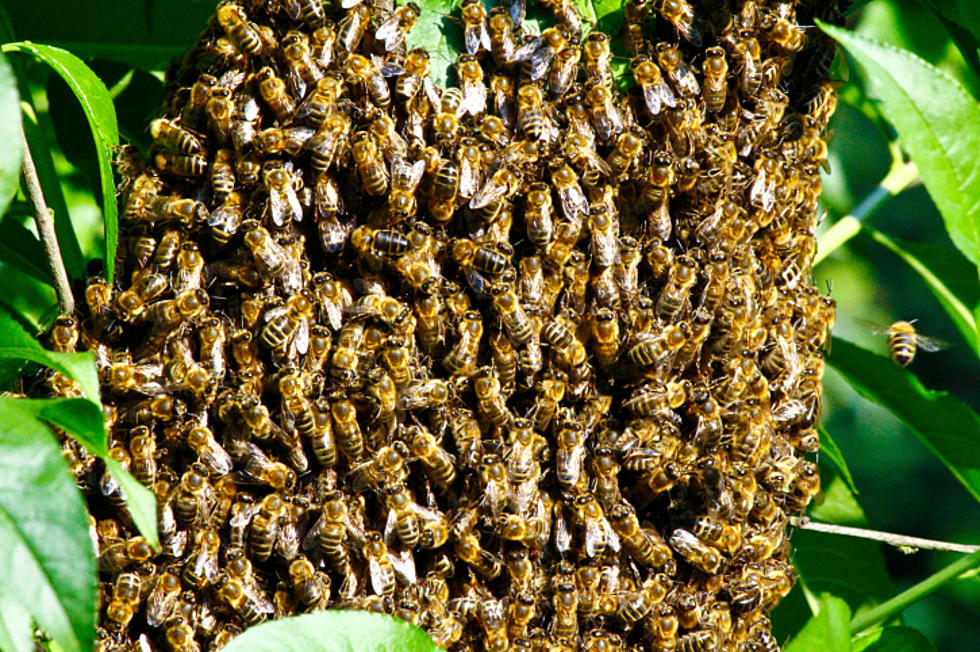
How To Work Less In The Lawn, But Have A Better Lawn
If you didn't know from my incessant ramblings during the warmer months about green grass and perfectly manicured lawns, I'm a lawn guy. I take pride having the nicest lawn on the block, and every year it has the same effect. The neighbors take better care of their lawns too so we can all be matchy-matchy. This always leads to the same conversation that I'm bound to have time and time again over the next few months, mainly "How do you keep your lawn looking so good?" The answer isn't exactly hard work.
In most aspects of life, I'll always find the easy way of getting hard results. Be it fishing, shooting, house projects and cleaning, or in this case, lawn care. It's doesn't have to be hard or take up all of your time, but it does take a hint of hard work early on this time of year... and before you hop on some soapbox about cost and not having "lawn care" money, I do it on the cheap too.
First and foremost, you have to get rid of your weeds. Right now is the perfect time to bomb all that greenery, but your window is running out. I sprayed a week too late one year, and I had a brown yard until June. That's because now is the time to spray non-specific herbicides like Round-Up. Obviously, you don't want to spray the name brand stuff, it's too expensive. Go to Atwoods, buy yourself a gallon of concentrate and a sprayer. Mix it up and spray those weeds. I like to add a color tint to mine just so I can see where I've sprayed. Waste not, want not. Sure, if you really look in your lawn, odds are you'll see the first few sprigs of bermuda coming up, especially around concrete as it'll radiate heat into the soil. Don't be afraid to spray around it. There's plenty more that will come up in a week or two. By that time, you've already assassinated your winter and early spring weeds.
Second, after you weeds die, you want to mow really low and bag those clippings. A better lawn will establish if it doesn't have to compete with dead and decaying grass from last year. As the days grow, you can count that most of the green you'll start to see over the next two or three weeks will be grass. It's good. Let it grow, but hold off on that fertilizer just yet. You see, Oklahoma has a habit of producing a final polar blast sometime in April. A quick one or two night hard freeze, and if you've fertilized your grass to encourage growth, it could take a quick cold shock and either stall or even die. I've seen it happen. Instead, just mow it at least once per week and let it do its thing.
If I didn't mention it yet, your lawn mower blades should be sharp. It doesn't have to be razor sharp, but that won't hurt either. You don't need to by a "kit" or a fancy new grinder either. You just need a trusty file and a nail. You bang the nail into the wall, sharpen your blade, and hang it on that nail. If it hangs pretty level, it's balanced enough and ready to mow two or three times. I like to keep two blades for the mower. I'll mow with one, keep the other sharp, and the minute I start seeing torn grass blades instead of smooth cuts, I'll swap em out. Two mows is about the average on a good sharp blade. Really just depends on your weeds.
"But I sprayed my weeds!"
You sprayed winter and early spring weeds my friend. Expect new weeds to pop up every month. When they do, grab whatever 24-d selective herbicide is on sale and spray your lawn. If you have only a few weeds, spot spray. If you have many, grab a hose end sprayer and do work. By June, your easy-peasy weeding task will need a different herbicide, just look for something that will kill crab grass. It's a fluffy and individually bladed ugly weed that's easy to identify. If you have little round spots of what you think is crab grass but it doesn't die, it's not crab grass. In Lawton, there's a ton of dallisgrass and goose grass weeds. They look similar, but goose grass shoots up those tall stalks with the three seed pods on them. You have to take those out with the Round-Up type stuff. Before you spray it, taking out your bermuda with it, put on some rubber gloves, spray it on a towel, reach down and run that wet towel up the stalks. You'll protect your grass and kill the weed.
I know I've gotten a little ahead of myself, but it's good information you can reference through the season. You're still mowing at least once a week right? Bermuda is a weird grass. It's technically a weed, but a really attractive one that grows anywhere it gets enough sun, heat, and water. If you have bare spots in your yard, mow that bermuda low and often. This will encourage it to spread. If you have a good thick stand of it, let it grow tall. I mow mine at nearly four inches. I know that sounds crazy, but here's why. The lower you mow your bermuda grass, the more often you have to mow it. Also, the taller and thicker your grass is, the more weed-free it will stay. It will literally choke the weeds out.
I know it sounds like a lot of work, but it's not. It's a few extra evenings in the lawn early on, but by the time the heat really sets in and the lawn goes into that gray-ish heat dormancy, weeds won't want to grow anyway, and you'll be able to skip a week or two in between mowings. Your time out of the heat later this summer begins now. Get out there this week and spray your weeds. Don't say "I don't have time." I have a big yard and it only takes about an hour doing it by hand with a pump sprayer. You just have to nut-up and earn that man card.
Pro-Tips:
A combined "Weed & Feed" product is only doing half of each job. Do it proper. Kill weeds, then fertilize later after you know the threat of a last minute freeze is over. When you do fertilize, go for the cheap stuff. It's all the same, you're just paying for a name. The organic slow-release nitrogen is your best friend. Throw it down thick once a month. Ironically, organic nitrogen is not only the cheap stuff, it won't burn your lawn and you can let nature water it in.
Honestly, sharpen your mower blades. It makes a huge difference in cut quality, plus you can mulch without leaving clumps everywhere that will kill your grass. You can bag too if you prefer, but grass clippings are like free fertilizer.
Always read the labels, and if you have questions, Google is your friend. Some selective herbicides out there are real nasty. You don't want to give yourself arsenic poisoning just because you're too lazy to read the label.
Also, if you put your time in edging now while it's cool, running that trimmer for perfect square edges will be easier for the rest of the year. Google "edging air barrier" and aim for that before the dirt gets to a concrete level of hardness.
More From 1073 Popcrush










